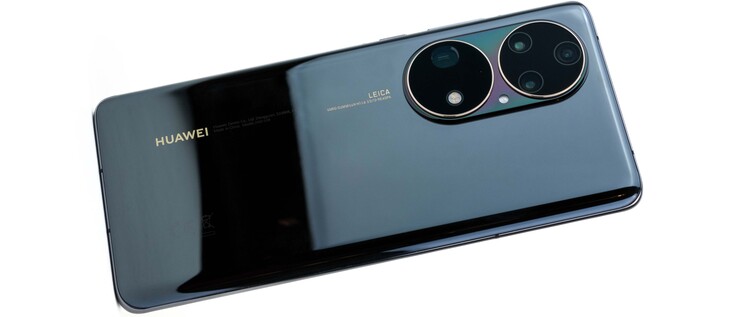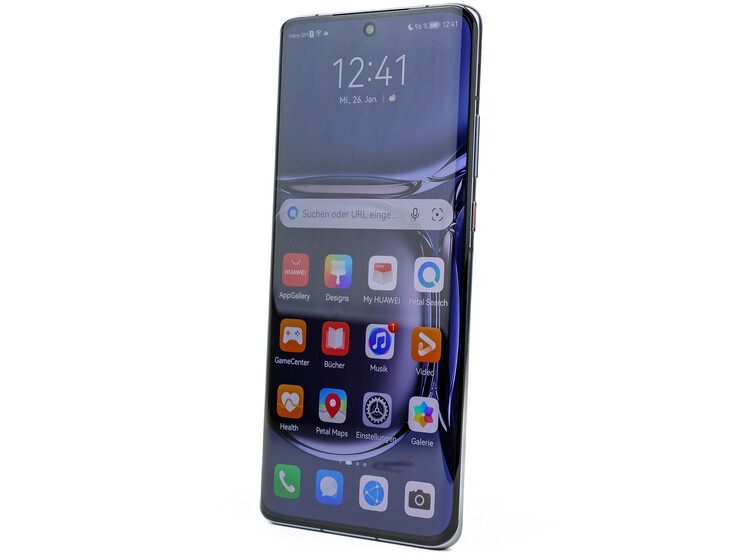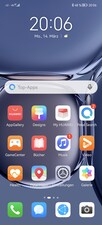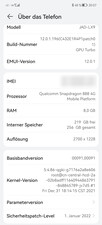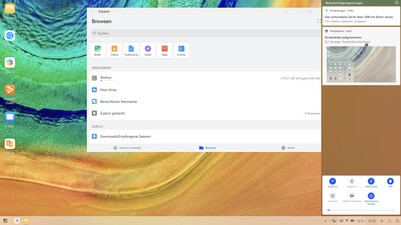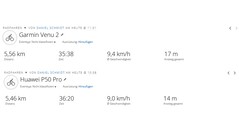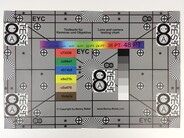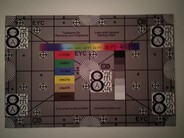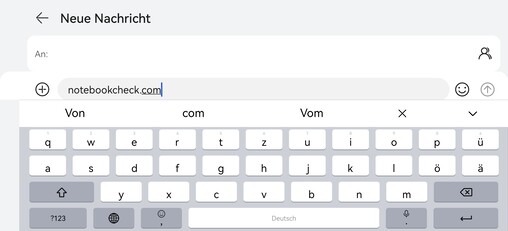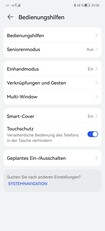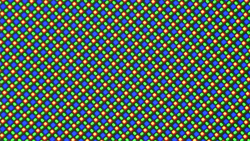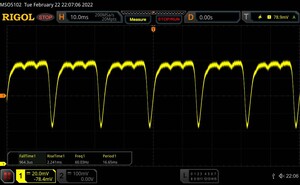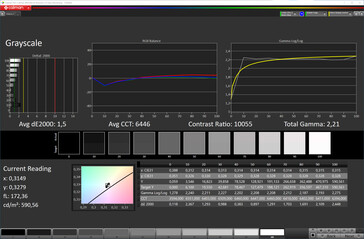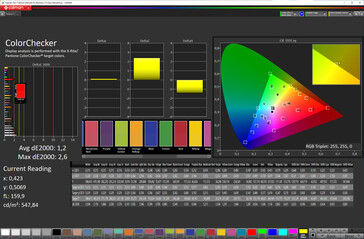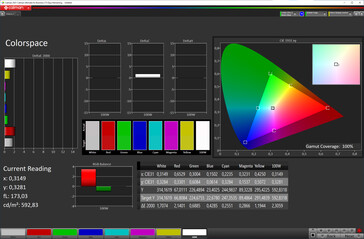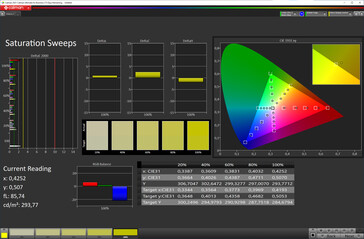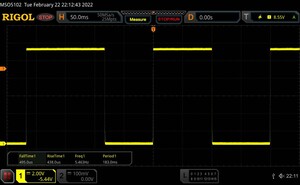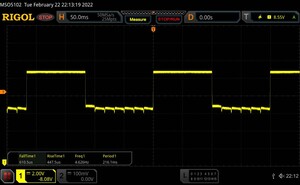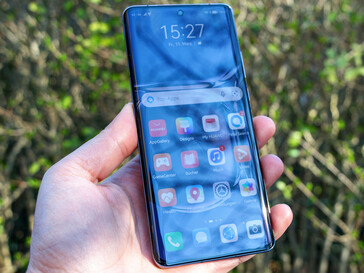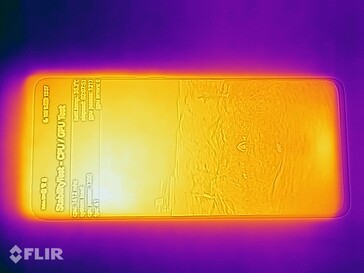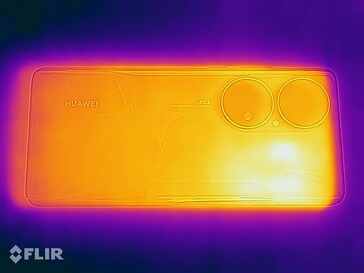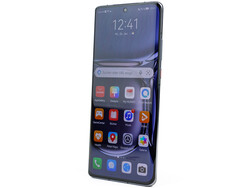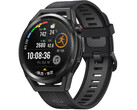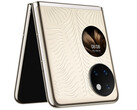Huawei P50 Pro review - The camera reference among smartphones stands apart
It isn't that long ago that the Huawei P series was one of the most anticipated smartphones of the year. But with the trade war between China and the US, the manufacturer isn't allowed to use Google services, is unable to produce its own chipsets, and has to make do without 5G even in its flagship smartphone.
Under these difficult circumstances, the P50 Pro attempts to regain its earlier top position and defend its self-chosen label as "photography miracle." Find out in this test, whether it succeeds in these challenges.
Possible Competitors in Comparison
Rating | Date | Model | Weight | Drive | Size | Resolution | Price |
|---|---|---|---|---|---|---|---|
| 88.8 % v7 (old) | 03 / 2022 | Huawei P50 Pro SD 888 4G, Adreno 660 | 195 g | 256 GB UFS 3.1 Flash | 6.60" | 2700x1228 | |
| 89.4 % v7 (old) | 04 / 2020 | Huawei P40 Pro Kirin 990 5G, Mali-G76 MP16 | 209 g | 256 GB UFS 3.0 Flash | 6.58" | 2640x1200 | |
| 87.6 % v7 (old) | 02 / 2022 | Xiaomi 12 Pro SD 8 Gen 1, Adreno 730 | 204 g | 256 GB UFS 3.1 Flash | 6.73" | 3200x1440 | |
| 90.8 % v7 (old) | 10 / 2021 | Apple iPhone 13 Pro A15, A15 GPU 5-Core | 203 g | 256 GB NVMe | 6.10" | 2532x1170 | |
| 89.6 % v7 (old) | 02 / 2021 | Samsung Galaxy S21+ Exynos 2100 5G, Mali-G78 MP14 | 200 g | 128 GB UFS 3.1 Flash | 6.70" | 2400x1080 |
Case - Elegant and comfortable to hold
The Huawei P50 Pro is slimmer and lighter than its P40 Pro predecessor, even though the battery capacity has increased. With its rounded display sides, it looks very slim and feels comfortable to hold in the hand. Only the Cocoa Gold and Golden Black color versions are offered in Germany.
The workmanship in the smartphone is very good. Both the front and back are covered by some sort of glass for which no specifications are given. This is framed in a high-gloss metal frame. The Huawei smartphone resists any attempts of warping without showing any signs of a reaction. The gaps are tight and very even, and you can only notice when looking closely, that the gap between the glass and frame is slightly larger in the corners on the back.
In addition, the Huawei P50 Pro offers an IP68 certification, so it is dust and waterproof. The battery is built-in and cannot be replaced by the user. The card tray cover is flush with the frame and also has the same color.
Equipment - The Huawei P50 Pro is fully equipped
With USB 3.2 (Gen. 1), the Huawei P50 Pro is not only offering a very fast connection, but it also allows for wired display output via HDMI and DisplayPort connection, including an optional desktop mode. Power Delivery for charging other devices is supported, and so is OTG, enabling you to connect peripheral devices.
While there is no notification LED, the smartphone offers an optional always-on display. It also forgoes an audio port, and you have to purchase a corresponding adapter for the USB port separately. Besides Xiaomi, Huawei is also one of the few manufacturers that still offer an infrared blaster at this point, allowing you to use it as a remote control replacement for multimedia devices, air conditioners, or cameras, etc.
SD Card Reader
The storage of the Huawei P50 Pro can be expanded by up to 256 GB via NanoMemory card. While this is nice, the in-house Huawei format isn't particularly affordable. On the other hand, the transfer rates turn out quite good and the exFAT file system is also supported.
| SD Card Reader - average JPG Copy Test (av. of 3 runs) | |
| Huawei P50 Pro (Huawei NanoMemory) | |
Cross Platform Disk Test (CPDT)
Software - Huawei smartphone with Android 11 and EMUI 12
The Huawei P50 Pro comes with Android 11 but still doesn't offer Google services. The manufacturer continues to use the known EMUI user interface, which is visually indistinguishable from the Harmony OS that is used in China.
Although the Android version isn't the most current, Huawei at least makes an effort to keep the security patches fairly current. In our P50 Pro test unit, they are at the level of January 1, 2022 at the time of the testing.
Even without the Google Play Store, you can still find many of the necessary apps in the AppGallery or install them via Petal Search from the corresponding web sites. However, the latter is a bit cumbersome and interrupted by many security notifications.
While the system itself is very comfortable to operate, those who don't want to leave everything to the automatic updates will constantly be inundated with questions whether they shouldn't be activated after all.
Communication and GNSS - P50 Pro comes with Wi-Fi 6 and LTE
The WLAN module of the Huawei P50 Pro supports Wi-Fi 6 (IEEE-802.11 a, b, g, n, ax), allowing it to communicate in the 2.4 as well as 5.0-GHz range. Unfortunately, the Qualcomm SoC only appears to support VHT80, causing the data rates to turn out lower than in the P40 Pro before. In combination with our Asus ROG GT-AXE1000 reference router, the transfer rates even remain below the capabilities of the standard.
The P50Pro can access mobile data using LTE at best. The frequency band coverage is very extensive, allowing for connections worldwide. However, the Huawei smartphone does not support 5G. The reception characteristics were inconspicuous during the test.
| Networking | |
| iperf3 transmit AXE11000 | |
| Xiaomi 12 Pro | |
| Average of class Smartphone (49.8 - 1828, n=177, last 2 years) | |
| Huawei P50 Pro | |
| iperf3 receive AXE11000 | |
| Xiaomi 12 Pro | |
| Average of class Smartphone (52 - 1721, n=177, last 2 years) | |
| Huawei P50 Pro | |
| iperf3 transmit AX12 | |
| Huawei P40 Pro | |
| Samsung Galaxy S21+ | |
| Samsung Galaxy S21+ | |
| Apple iPhone 13 Pro | |
| iperf3 receive AX12 | |
| Samsung Galaxy S21+ | |
| Samsung Galaxy S21+ | |
| Huawei P40 Pro | |
| Apple iPhone 13 Pro | |
Outdoors, the satellite locating succeeds very quickly and accurately with the Huawei P50 Pro. A large number of networks and frequency bands are supported.
During a bike tour, we compare the locating accuracy of the smartphone with that of the Garmin Venu 2. While the P50 Pro doesn't record the route taken without any mistakes, it still is relatively accurate and records its position fairly often. This makes it very well-suited for navigation tasks.
Telephone Functions and Voice Quality
The calling characteristics of the Huawei P50 Pro are convincing in the test. The voice quality of the ear piece is very good, and loud surrounding noises are also suppressed without distorting the voice of the user. The speaker also sounds attractive in quiet surroundings with only some minimal booming.
VoLTE and WLAN calling are supported, and only managing SIP accounts is not possible in the system settings.
Cameras - A powerful Leica quad camera
The front camera of the Huawei P50 Pro has a resolution of 13 Megapixels and is able to use an autofocus with eye tracking. While the recordings are convincing, they are characterized by very strong colors in the default settings. Particularly objects in the background appear very sharp. In portrait mode this doesn't happen, and you can optionally either blur the background using a Bokeh mode or replace it in other ways.
However, the showpiece is the main camera, which consists of a total of four sensors, a phase and a contrast autofocus. The primary sensor is a 50-MP True Chroma camera, which is able to use an optical image stabilizer (OIS). It is accompanied by an additional 40-MP monochrome camera, which is even more light sensitive. In addition, there is also an ultrawide angle lens with 13 MP as well as a 64-MP telephoto lens with OIS. The latter allows for 3.5x optical zoom, 10x hybrid zoom, and 100x max digital zoom. The stabilization of such powerful zoom levels succeeds fairly well, but there is a slight delay with movements. It is always better to support your hand holding the phone. Up to a 30x zoom level, we like the pictures fairly well and they are still usable, depending on the purpose. However, often some intermediate levels such as 5x zoom are not calibrated optimally, and the autofocus seems to have some problems in setting the optimal focus point. The images are characterized by a strong contrast, and the algorithms sharpen the edges very strongly. Higher zoom levels are more of a gimmick.
The main sensor benefits from the new Huawei XD lens as well as the XD Fusion Pro image engine. With its double lens, Huawei again achieves a powerful low-light performance but isn't in a class by itself anymore. In daylight, the photos are also characterized by a large dynamic range, crisp contrasts, and vibrant colors. You can record videos using both the front and main camera in Ultra HD at up to 60 FPS.
Image comparison
Choose a scene and navigate within the first image. One click changes the position on touchscreens. One click on the zoomed-in image opens the original in a new window. The first image shows the scaled photograph of the test device.
Main CameraMain CameraUltrawide Angle5x ZoomLow-Light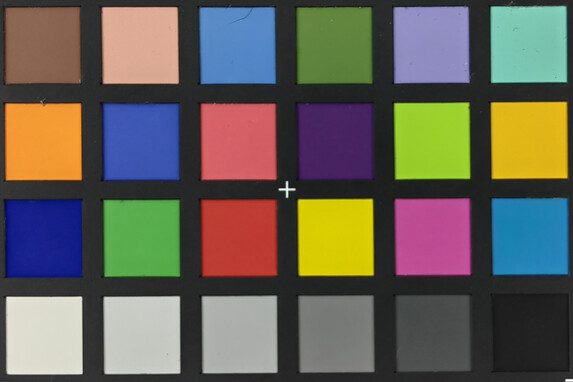
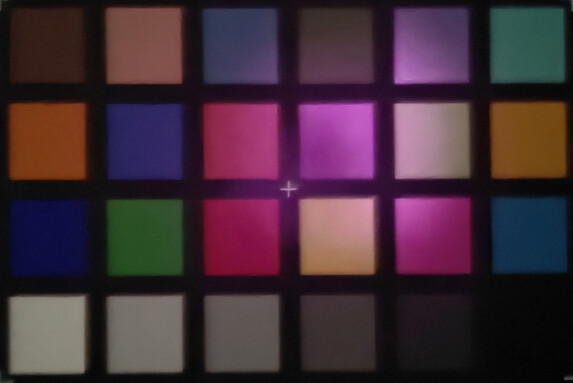
Accessories and Warranty - 66-Watt charger included
The box of the Huawei P50 Pro includes a modular charger (max. 66 watts, USB-A), a USB cable (Type-A to Type-C), a SIM tool, and a transparent protective silicone case. Optionally, you can also purchase other accessories such as cases or charger in the Huawei shop.
The warranty period is 24 months.
Input Devices and Operation - Solid biometrics in the Huawei P50 Pro
The manufacturer protects the capacitive touchscreen of the Huawei P50 Pro by an additional protective foil. Its transitions to the actual display are slightly too hard, and the sliding characteristics of the foil are definitely not optimal either.
Huawei's in-house Celia keyboard is installed as the default, but Microsoft's SwiftKey, which was always also preinstalled in previous years, continues to be available in the AppGallery, and you can install it without any complications, just like other layouts.
There is an optical fingerprint sensor in the display for biometric security. Even if this isn't an ultrasound version, it still shows itself very reliable in the test, unlocking the P50 Pro quickly and with a high recognition rate. The 2D face recognition works even faster, and its security is supposed to be improved by some AI algorithms.
Display - An accurate OLED panel with 120 Hz
The display of the Huawei P50 Pro is only minimally larger than that of the predecessor and uses an expanded Full-HD resolution. With a pure white image, the brightness reaches a very good value at up to 790 cd/m² with the activated brightness sensor, but some other smartphones can even become much brighter. With an even distribution of light and dark areas (APL50) up to 823 cd/m² are reached. Those who don't want to use the automatic adjustment by the brightness sensor can get up to 591 cd/m².
The refresh rate can go up to 120 Hz. You can optionally change this in the settings to a fixed 120 or 60 Hz, or the system can adjust this automatically within this range.
The OLED panel of the P50 Pro constantly uses DC dimming, which is supposed to run at up to 1440 Hz to compensate the OLED flickering in the best way possible. However, we only measure 60 Hz.
| |||||||||||||||||||||||||
Brightness Distribution: 95 %
Center on Battery: 765 cd/m²
Contrast: ∞:1 (Black: 0 cd/m²)
ΔE ColorChecker Calman: 1.2 | ∀{0.5-29.43 Ø4.78}
ΔE Greyscale Calman: 1.5 | ∀{0.09-98 Ø5}
100% sRGB (Calman 2D)
Gamma: 2.21
CCT: 6446 K
| Huawei P50 Pro OLED, 2700x1228, 6.6" | Huawei P40 Pro OLED, 2640x1200, 6.6" | Xiaomi 12 Pro AMOLED, 3200x1440, 6.7" | Apple iPhone 13 Pro OLED, 2532x1170, 6.1" | Samsung Galaxy S21+ Dynamic AMOLED 2X, 2400x1080, 6.7" | |
|---|---|---|---|---|---|
| Screen | -8% | 3% | 17% | -14% | |
| Brightness middle (cd/m²) | 765 | 584 -24% | 959 25% | 1050 37% | 814 6% |
| Brightness (cd/m²) | 771 | 576 -25% | 977 27% | 1058 37% | 814 6% |
| Brightness Distribution (%) | 95 | 95 0% | 96 1% | 98 3% | 97 2% |
| Black Level * (cd/m²) | |||||
| Colorchecker dE 2000 * | 1.2 | 1.1 8% | 1.1 8% | 1 17% | 2 -67% |
| Colorchecker dE 2000 max. * | 2.6 | 2.3 12% | 3.1 -19% | 2.4 8% | 3.6 -38% |
| Greyscale dE 2000 * | 1.5 | 1.8 -20% | 1.9 -27% | 1.5 -0% | 1.4 7% |
| Gamma | 2.21 100% | 2.16 102% | 2.22 99% | 2.2 100% | 2.12 104% |
| CCT | 6446 101% | 6355 102% | 6498 100% | 6504 100% | 6568 99% |
* ... smaller is better
Screen Flickering / PWM (Pulse-Width Modulation)
| Screen flickering / PWM detected | 60 Hz | ||
The display backlight flickers at 60 Hz (worst case, e.g., utilizing PWM) . The frequency of 60 Hz is very low, so the flickering may cause eyestrain and headaches after extended use. In comparison: 53 % of all tested devices do not use PWM to dim the display. If PWM was detected, an average of 8101 (minimum: 5 - maximum: 343500) Hz was measured. | |||
Those for whom the reproduction of the smaller sRGB color space is sufficient will get a very accurate color reproduction with an almost perfect white balance. In the standard settings, the image is more saturated and cooler.
Display Response Times
| ↔ Response Time Black to White | ||
|---|---|---|
| 0.933 ms ... rise ↗ and fall ↘ combined | ↗ 0.438 ms rise | |
| ↘ 0.495 ms fall | ||
| The screen shows very fast response rates in our tests and should be very well suited for fast-paced gaming. In comparison, all tested devices range from 0.1 (minimum) to 240 (maximum) ms. » 3 % of all devices are better. This means that the measured response time is better than the average of all tested devices (20.2 ms). | ||
| ↔ Response Time 50% Grey to 80% Grey | ||
| 1.058 ms ... rise ↗ and fall ↘ combined | ↗ 0.448 ms rise | |
| ↘ 0.611 ms fall | ||
| The screen shows very fast response rates in our tests and should be very well suited for fast-paced gaming. In comparison, all tested devices range from 0.165 (minimum) to 636 (maximum) ms. » 4 % of all devices are better. This means that the measured response time is better than the average of all tested devices (31.6 ms). | ||
Outdoors, the Huawei P50 Pro does very well, and at worst the reflective surface can become a bit annoying, depending on the viewing angle.
The viewing angle stability is also convincing. Only at very steep viewing angles, the displayed contents can be overlayed by a slight green veil.
Performance - Huawei P50 Pro uses the Snapdragon 888
The Huawei P50 Pro doesn't use a Kirin SoC anymore but a Snapdragon 888 4G from Qualcomm that is accompanied by 8 GB of working memory. The Adreno 660 is used as the graphics unit.
We ran our benchmarks with the performance mode activated, which is deactivated by default. The differences become noticeable in the Geekbench benchmark. Without the performance mode, the single-core performance drops by 17%, while the performance when using all cores increases by more than 6%. On the other hand, in GFXBench the results remain almost unchanged. So we recommend to leave the performance mode deactivated. Some possible performance increases are not noticeable but only the power consumption is increased instead.
| PCMark for Android - Work 3.0 | |
| Average of class Smartphone (4507 - 28557, n=186, last 2 years) | |
| Samsung Galaxy S21 FE 5G | |
| Huawei P50 Pro | |
| Xiaomi 12 Pro | |
| Average Qualcomm Snapdragon 888 4G (11230 - 13274, n=3) | |
| AImark - Score v2.x | |
| Samsung Galaxy S21+ | |
| Apple iPhone 13 Pro | |
| Huawei P40 Pro | |
| Xiaomi 12 Pro | |
| Huawei P50 Pro | |
| Average Qualcomm Snapdragon 888 4G (n=1) | |
| Samsung Galaxy S21 FE 5G | |
| Jetstream 2 - 2.0 Total Score | |
| Apple iPhone 13 Pro (Safari 15) | |
| Average of class Smartphone (23.8 - 387, n=149, last 2 years) | |
| Xiaomi 12 Pro (Chrome 97) | |
| Huawei P40 Pro (Huawei Browser 10.1) | |
| Samsung Galaxy S21+ (Chrome 88.0.4324.152) | |
| JetStream 1.1 - Total Score | |
| Apple iPhone 13 Pro (Safari 15) | |
| Xiaomi 12 Pro (Chrome 97) | |
| Samsung Galaxy S21+ (Chrome 88.0.4324.152) | |
| Huawei P40 Pro (Huawei Browser 10.1) | |
| Average Qualcomm Snapdragon 888 4G (105.5 - 110.3, n=2) | |
| Huawei P50 Pro (Huawei Browser 12) | |
| Speedometer 2.0 - Result 2.0 | |
| Apple iPhone 13 Pro (Safari 15) | |
| Average of class Smartphone (15.2 - 643, n=122, last 2 years) | |
| Samsung Galaxy S21+ (Chrome 88.0.4324.152) | |
| Xiaomi 12 Pro (Chrome 97) | |
| Huawei P40 Pro (Huawei Browser 10.1) | |
| WebXPRT 3 - Overall | |
| Apple iPhone 13 Pro (Safari 15) | |
| Average of class Smartphone (38 - 380, n=31, last 2 years) | |
| Xiaomi 12 Pro (Chrome 97) | |
| Huawei P50 Pro (Huawei Browser 12) | |
| Average Qualcomm Snapdragon 888 4G (101 - 115, n=2) | |
| Samsung Galaxy S21+ (Chrome 88.0.4324.152) | |
| Huawei P40 Pro | |
| Octane V2 - Total Score | |
| Apple iPhone 13 Pro (Safari 15) | |
| Average of class Smartphone (2228 - 121337, n=197, last 2 years) | |
| Xiaomi 12 Pro (Chrome 97) | |
| Samsung Galaxy S21+ (Chrome 88.0.4324.152) | |
| Huawei P40 Pro (Huawei Browser 10.1) | |
| Average Qualcomm Snapdragon 888 4G (21748 - 26010, n=3) | |
| Huawei P50 Pro (Huawei Browser 12) | |
| Mozilla Kraken 1.1 - Total | |
| Huawei P40 Pro (Huawei Browser 10.1) | |
| Average Qualcomm Snapdragon 888 4G (1835 - 1938, n=2) | |
| Huawei P50 Pro (Huawei Browser 12) | |
| Samsung Galaxy S21+ (Chrome 88.0.4324.152) | |
| Xiaomi 12 Pro (Chrome 97) | |
| Average of class Smartphone (257 - 28190, n=154, last 2 years) | |
| Apple iPhone 13 Pro (Safari 15) | |
* ... smaller is better
| Huawei P50 Pro | Huawei P40 Pro | Xiaomi 12 Pro | Samsung Galaxy S21+ | Average 256 GB UFS 3.1 Flash | Average of class Smartphone | |
|---|---|---|---|---|---|---|
| AndroBench 3-5 | -21% | 35% | 7% | 15% | 45% | |
| Sequential Read 256KB (MB/s) | 1836 | 1775 -3% | 1620 -12% | 1623 -12% | 1757 ? -4% | 2228 ? 21% |
| Sequential Write 256KB (MB/s) | 755 | 395.7 -48% | 1465 94% | 1037 37% | 1204 ? 59% | 1852 ? 145% |
| Random Read 4KB (MB/s) | 269.3 | 228.1 -15% | 324.9 21% | 309.6 15% | 287 ? 7% | 296 ? 10% |
| Random Write 4KB (MB/s) | 329.6 | 271.8 -18% | 448.9 36% | 283.3 -14% | 318 ? -4% | 339 ? 3% |
Emissions - Huawei is also unable to manage the 888 SoC
Temperatures
The surface temperatures of the Huawei P50 Pro remain low during idle operation. While they increase under constant load, the smartphone only becomes hand warm in some areas.
During the stress test of 3DMark Wild Life, we see a performance drop of almost 50% already after a short time, so it behaves almost the same way as the Galaxy S21 FE. But this is without the performance mode activated. If it is activated, the P50 Pro overheats after 18 of the 20 runs and interrupts the test. During this time, we measure surface temperatures of up to 41.7 °C (107 °F), which gives absolutely no reason for concern. However, the performance drops themselves are significant enough to cause some stutters during demanding games.
(+) The maximum temperature on the upper side is 35.1 °C / 95 F, compared to the average of 35.2 °C / 95 F, ranging from 21.9 to 247 °C for the class Smartphone.
(+) The bottom heats up to a maximum of 34 °C / 93 F, compared to the average of 34 °C / 93 F
(+) In idle usage, the average temperature for the upper side is 28.1 °C / 83 F, compared to the device average of 32.9 °C / 91 F.
3DMark Wild Life Stress Test
| 3DMark | |
| Wild Life Stress Test Stability | |
| Huawei P40 Pro | |
| Apple iPhone 13 Pro | |
| Samsung Galaxy S21+ | |
| Huawei P50 Pro | |
| Xiaomi 12 Pro | |
| Wild Life Extreme Stress Test | |
| Apple iPhone 13 Pro | |
| Huawei P50 Pro | |
| Xiaomi 12 Pro | |
Speakers
The two speakers of the Huawei P50 Pro produce a relatively balanced sound, where you can even hear a little bit of bass. At higher volumes, the highs are slightly too dominant, but otherwise the Huawei smartphone sounds good, particularly at more moderate volumes.
While there is no audio port, you can optionally purchase the corresponding adapter for the USB-C port. For Bluetooth, the only available audio codecs are SBC, AAC, and LDAC.
Huawei P50 Pro audio analysis
(+) | speakers can play relatively loud (86.4 dB)
Bass 100 - 315 Hz
(-) | nearly no bass - on average 20% lower than median
(±) | linearity of bass is average (13.2% delta to prev. frequency)
Mids 400 - 2000 Hz
(+) | balanced mids - only 4.5% away from median
(+) | mids are linear (4% delta to prev. frequency)
Highs 2 - 16 kHz
(+) | balanced highs - only 4.9% away from median
(+) | highs are linear (2.1% delta to prev. frequency)
Overall 100 - 16.000 Hz
(±) | linearity of overall sound is average (16% difference to median)
Compared to same class
» 5% of all tested devices in this class were better, 4% similar, 91% worse
» The best had a delta of 11%, average was 35%, worst was 134%
Compared to all devices tested
» 24% of all tested devices were better, 5% similar, 70% worse
» The best had a delta of 4%, average was 24%, worst was 134%
Samsung Galaxy S21 FE 5G audio analysis
(+) | speakers can play relatively loud (88.9 dB)
Bass 100 - 315 Hz
(-) | nearly no bass - on average 25.8% lower than median
(±) | linearity of bass is average (8.9% delta to prev. frequency)
Mids 400 - 2000 Hz
(±) | reduced mids - on average 6.3% lower than median
(+) | mids are linear (4.2% delta to prev. frequency)
Highs 2 - 16 kHz
(±) | higher highs - on average 5% higher than median
(+) | highs are linear (3.7% delta to prev. frequency)
Overall 100 - 16.000 Hz
(±) | linearity of overall sound is average (19.3% difference to median)
Compared to same class
» 26% of all tested devices in this class were better, 9% similar, 65% worse
» The best had a delta of 11%, average was 35%, worst was 134%
Compared to all devices tested
» 46% of all tested devices were better, 8% similar, 47% worse
» The best had a delta of 4%, average was 24%, worst was 134%
Battery Life - Huawei smartphone with 4360 mAh
Power Consumption
The power consumption is increased particularly during idle operation, but at an adjusted brightness of 150 cd/m², it is slightly lower than that of the Galaxy S21 FE, which uses the same SoC.
The Huawei P50 Pro supports wired charging at up to 66 watts and wireless charging at up to 50 watts. Reverse wireless charging is also supported.
| Off / Standby | |
| Idle | |
| Load |
|
Key:
min: | |
| Huawei P50 Pro 4360 mAh | Huawei P40 Pro 4200 mAh | Xiaomi 12 Pro 4600 mAh | Apple iPhone 13 Pro 3095 mAh | Samsung Galaxy S21+ 4800 mAh | Average Qualcomm Snapdragon 888 4G | Average of class Smartphone | |
|---|---|---|---|---|---|---|---|
| Power Consumption | 29% | 17% | 39% | 14% | 3% | 1% | |
| Idle Minimum * (Watt) | 1.24 | 0.92 26% | 0.94 24% | 0.51 59% | 0.74 40% | 1.285 ? -4% | 0.842 ? 32% |
| Idle Average * (Watt) | 2.14 | 1.41 34% | 1.24 42% | 1.54 28% | 1.27 41% | 1.955 ? 9% | 1.439 ? 33% |
| Idle Maximum * (Watt) | 2.2 | 1.47 33% | 1.34 39% | 1.57 29% | 1.33 40% | 2.05 ? 7% | 1.624 ? 26% |
| Load Average * (Watt) | 3.95 | 3.35 15% | 5.7 -44% | 3.06 23% | 6.32 -60% | 4.1 ? -4% | 7.03 ? -78% |
| Load Maximum * (Watt) | 10.45 | 6.37 39% | 8.12 22% | 4.59 56% | 9.61 8% | 9.82 ? 6% | 11.3 ? -8% |
* ... smaller is better
Power Consumption: Geekbench (150 cd/m²)
Power Consumption: GFXBench (150 cd/m²)
Battery Life
In the realistic WLAN test at an adjusted display brightness (150 cd/m²), the Huawei P50 Pro lasts less than 10 hours. With that, it stops running much earlier than the P40 Pro, despite having a larger battery. We already observed a similar behavior in the P50 Pocket.
| Huawei P50 Pro 4360 mAh | Huawei P40 Pro 4200 mAh | Xiaomi 12 Pro 4600 mAh | Apple iPhone 13 Pro 3095 mAh | Samsung Galaxy S21+ 4800 mAh | |
|---|---|---|---|---|---|
| Battery runtime | 27% | 31% | 69% | 11% | |
| WiFi v1.3 (h) | 9.8 | 12.4 27% | 12.8 31% | 16.6 69% | 10.9 11% |
| Reader / Idle (h) | 24.6 | 33.9 | 43.6 | 29.7 | |
| H.264 (h) | 19 | 13.1 | 24.9 | 19.6 | |
| Load (h) | 3.3 | 5.6 | 5.6 | 4.7 |
Pros
Cons
Verdict - Not everybody's favorite
In terms of the hardware, the Huawei P50 Pro is a very successful smartphone, and only the integration of a high-end snapdragon for the first time did not succeed optimally. This can be seen in the rather middling battery life and the mediocre cooling, among other things.
On the positive side, we see an accurate 120-Hz display and a really good camera setup. In addition, Huawei offers an IP68 certification, fast wireless and wired charging, and a great voice quality.
The Huawei P50 Pro is a very good smartphone, but it lacks some feature characteristics that are customary in its price class at this point.
The effects of the trade embargo become even more noticeable in the P50 Pro than in its predecessor. In terms of the display brightness, Huawei drops far behind the competitors. In addition, the panel is unable to lower the refresh rate below 60 Hz. There are also neither 5G nor Wi-Fi 6E, and you have to make do without the aptX codecs.
For those who are looking for a great premium smartphone with a powerful camera and don't mind the lack of Google services or don't need them at all, the P50 Pro might represent an attractive alternative. If you don't want to make do without 5G, a look at the predecessor, which is currently available for less than 650 Euros (~$719), might be worthwhile. In addition, the Xiaomi 12 Pro or the new Galaxy S22 series are also powerful competitors.
Price and Availability
The Huawei P50 Pro is available from Huawei Global in various European, African, and Asian countries. In the US, you can purchase it starting from $1024 from Amazon.
Huawei P50 Pro
- 08/30/2022 v7 (old)
Daniel Schmidt




